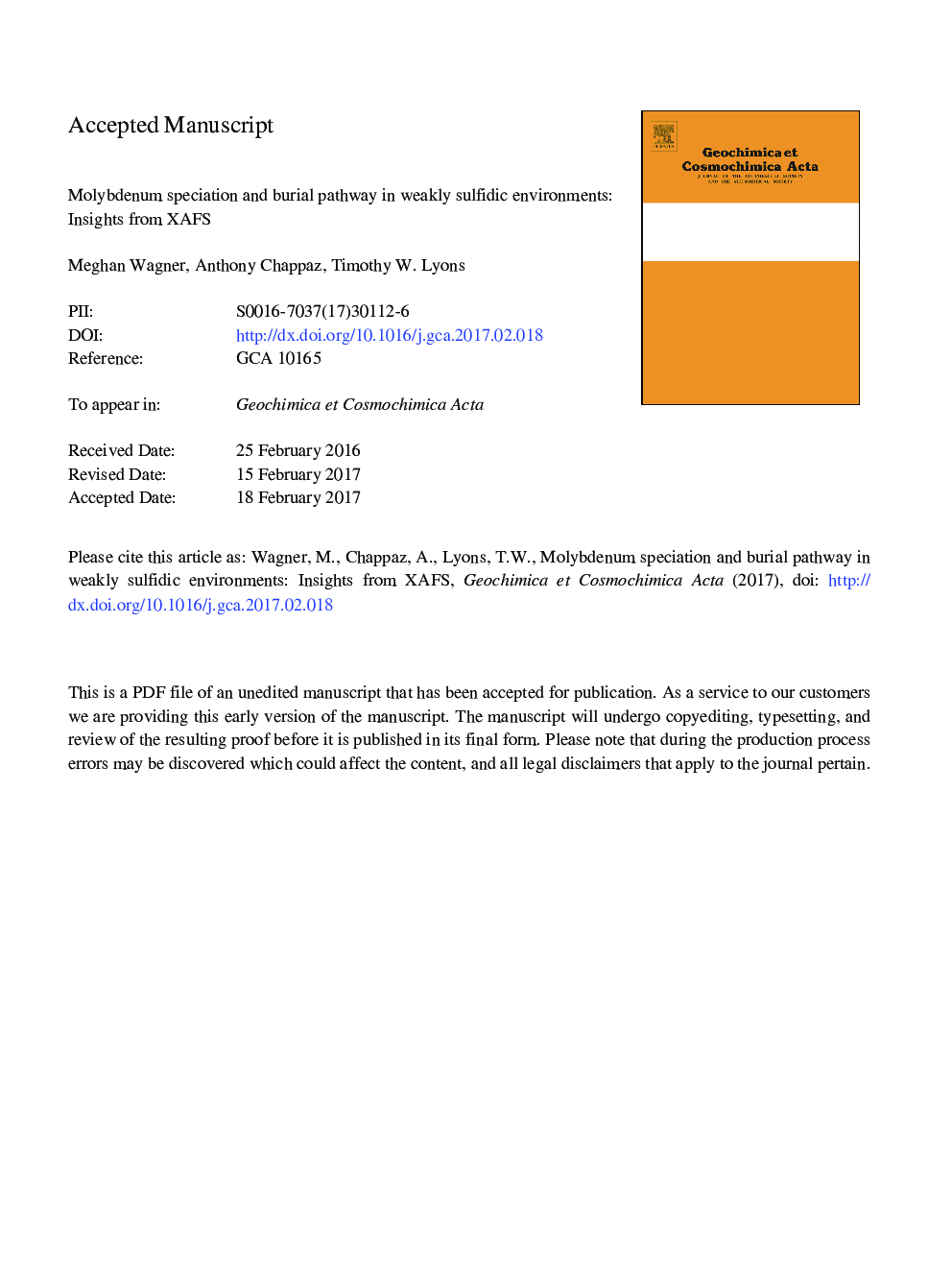| Article ID | Journal | Published Year | Pages | File Type |
|---|---|---|---|---|
| 5783409 | Geochimica et Cosmochimica Acta | 2017 | 40 Pages |
Abstract
Sedimentary molybdenum (Mo) accumulation is a robust proxy for sulfidic conditions in both modern and ancient aquatic systems and has been used to infer changing marine redox chemistry throughout Earth's history. Accurate interpretation of any proxy requires a comprehensive understanding of its biogeochemical cycling, but knowledge gaps remain concerning the geochemical mechanism(s) leading to Mo burial in anoxic sediments. Better characterization of Mo speciation should provide mechanistic insight into sedimentary Mo accumulation, and therefore in this study we investigate Mo speciation from both modern (Castle Lake, USA) and ancient (Doushantuo Formation, China) environments using X-ray Absorption Near Edge Structure (XANES) spectroscopy. By utilizing a series of laboratory-synthesized oxythiomolybdate complexes-many containing organic ligands-we expand the number of available standards to encompass a greater range of known Mo chemistry and test the linkage between Mo and total organic carbon (TOC). In weakly euxinic systems ([H2S(aq)] < 11 µM), or where sulfide is restricted to pore waters, natural samples are best represented by a linear combination of MoO3, MoOxS4âx2â (intermediate thiomolybdates), and [MoOx(cat)4âx]2â (cat = catechol, x = 2 or 3). These results suggest a revised model for how Mo accumulates in weakly sulfidic sediments, including a previously unrecognized role for organic matter in early sequestration of Mo and a de-emphasized importance for MoS42â (tetrathiomolybdate).
Keywords
Related Topics
Physical Sciences and Engineering
Earth and Planetary Sciences
Geochemistry and Petrology
Authors
Meghan Wagner, Anthony Chappaz, Timothy W. Lyons,
